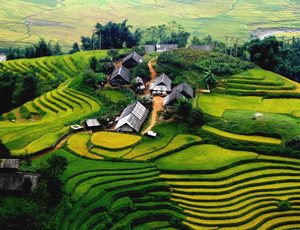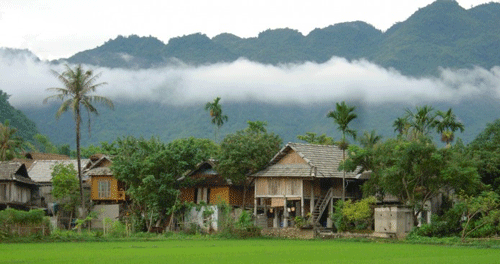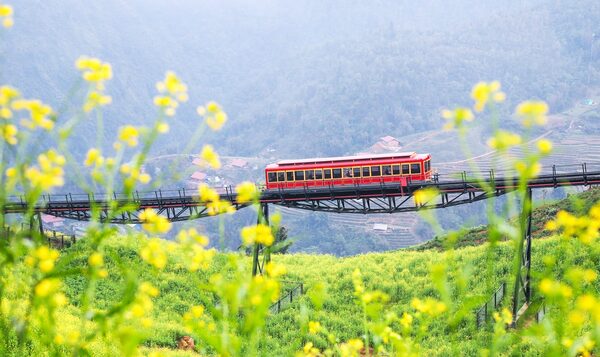Sapa, a charming destination, is renowned for its climate, picturesque landscapes, and diverse cultures. However, first-time visitors often find themselves uncertain about what to pack or which attractions to explore. This article will provide you essential tips for visiting Sapa with unforgetable experiences.
General information about Sapa
Location
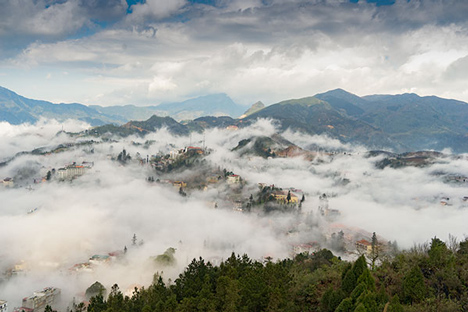
Sapa view from Ham Rong Peak
Sapa town is in Lao Cai province, more than 300 km Northwest of Hanoi capital. This is a tourist destination exploited since the French colonial period in the early 1900s, known as a foggy town in the Northwest with countless places, landscapes and interesting specialties that attract tourists, especially foreign tourists.
How to get to Sapa
Sapa is not near the airport so the only way to get there is by bus or train. Visitors can take a bus that takes about 5 hours from Hanoi to Sapa along the highway. The bus takes tourists directly to Sapa without any stops along the way. However, the disadvantage of taking the bus to Sapa at night is that it is more difficult and dangerous for tourists as the road to Sapa is mountainous and bumpy. Furthermore, because the bus runs on the highway, visitors will not have the opportunity to enjoy the scenery outside.
Another option to get to Sapa is to take the train. The benefit of taking the overnight train to Sapa is safety. The train stops at Lao Cai station and tourists will transfer to another bus to go to Sapa.
Weather and Best time to visit Sapa
Sapa is a special town, this place belongs to the temperate and subtropical climate zone so the weather is very cool all year round, especially in the winter there will be frost and snow.
The average temperature each year in Sapa is 15-18 degrees. Temperature is about 20-23 degrees during the day, about 16 degrees at night. Sapa’s weather is cool all year round, so it is always chosen by tourists as a favorite destination when planning a vacation in Vietnam.
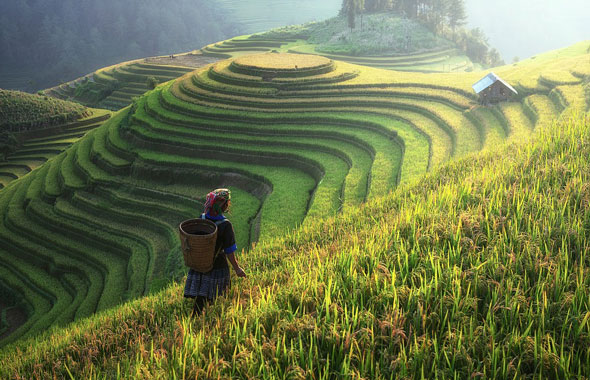
Terraced rice fields in Sapa Vietnam
Which month is best to travel to Sapa? Sapa has a cool climate all year round, so any time of the year is the ideal time to experience Sapa tours.
- From May to August: Sapa will have rain, although not significant, it will somewhat affect your trip. So you need to consider traveling to Sapa during this time.
- From September to November: If tourists want to immerse themselves in the ripe rice season – the harvest season in the highlands, remember to visit Sapa in early autumn. For groups of young people or photography enthusiasts, Sapa is one of the great cloud hunting spots at the beginning of winter.
- December to January of the following year: Sapa appears frosty and snowy, if traveling in this season, prepare enough warm clothes to welcome the snow in Sapa.
Useful Tips when visiting Sapa
Means of transportation in Sapa
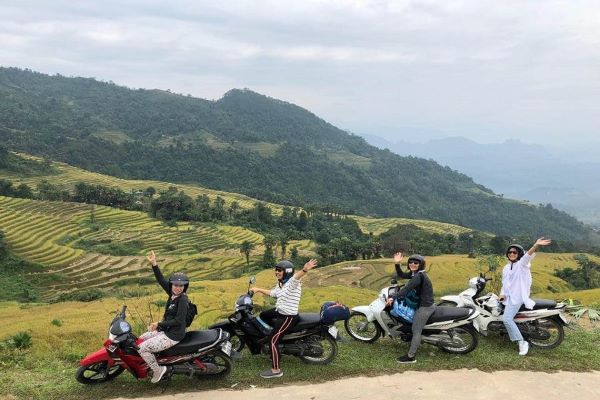
Renting motorbikes to explore the scenery
Sapa is a small town that can be explored by foot. However, to visit the ethnic villages, you’ll need to use other means of transport such as trekking, bicycles, motorbikes, taxes, or electric cars. If you opt for a motorbike, rentals are available at accommodations or designated rental areas, typically priced from 4-5 USD/motorbike, excluding gasoline. Ensure you’re confident with handling a motorbike as Sapa’s roads are mountainous and hard to pass.
Preparing luggage
Preparation is key when visiting Sapa. Summer in Sapa is cool, you can wear normally but still need a jacket. In winter, apart from warm clothing, consider thermal patches if you’re susceptible to the cold. Scarves and gloves can provide additional warmth.
With mountainous terrain that requires a lot of walking, you should wear sports shoes to have the most comfortable experience in Sapa and avoid high heels to prevent foot discomfort.
You should bring your ID card for temporary residence registration or motorbike rental as many tourists in Sapa choose to rent motorbikes for exploring the scenic surroundings.
Tips when visiting Ethnic House in Sapa
Sapa is home to ethnic minorities such as the H’Mong, Red Dao, Giay, Ha Nhi, and other groups. The unique cultural practices, as well as a few, sometimes surprising, taboos make Sapa become a well-known travel destination when travel to North Vietnam.
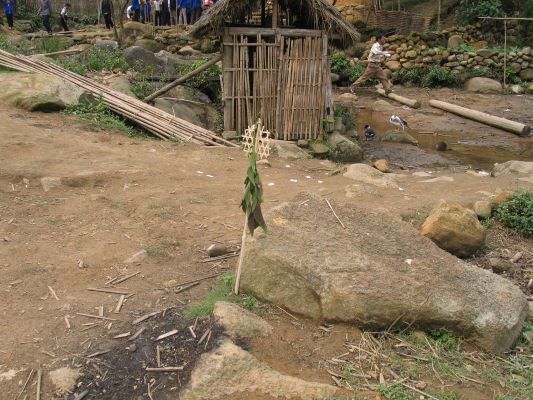
A green leaf signs in Ethnic Minorities village
Before visiting ethnic people’s houses, visitors need to observe carefully. If they see a green leaf branch, a thorn branch or a lattice-shaped wicker hanging in front of the house or at the top of the stairs. Those are signs that the family does not want strangers to enter the house.
There are many taboos related to the fire, sitting next to the fire and not placing your feet on or moving the stone used as a stirrup. When sitting near the kitchen, visitors should not turn their backs and step into the kitchen.
People should abstain from whistling indoors, because it is a signal to call in evil spirits and storms. Do not rub your hands on the heads of Mong and Dao children, because according to their perspective, human souls reside in the head, when strangers touch them, the souls run away in fear, making the children often get sick.
Dining and Shopping in Sapa
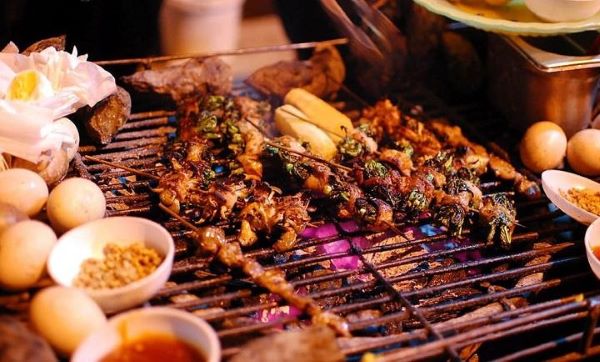
Grilled skewered food in Sapa
Exploring Sapa’s cuisine is a must for visitors. Sapa is famous for its specialty dishes, some of which may be unfamiliar to visitors. Thang co, a dish of the H’Mong people, is prepared from the intestines, stomach, and internal organs of buffalo or horse. If you can’t eat offal, avoid this dish.
Food prices in Sapa are not expensive, but it is advisable to ask for prices before eating. During the evening, you can visit the night street to enjoy San Lung wine and grilled food. The street is lined with numerous barbecue stalls with roasted eggs, baked hearts, grilled stomachs, grilled chicken, sweet potatoes, chicken eggs, roasted duck eggs, and lam rice.
When buying products in Sapa as gifts, if you see tobacco, mushrooms, or medicinal plants on sale, ask clearly about their uses. Tips when visiting the market are to be careful with products in Sapa because you may encounter high-priced but poor quality goods; and it’s important to ask the price before buying to avoid being overcharged.
Read more:

